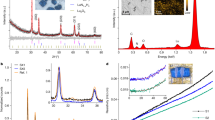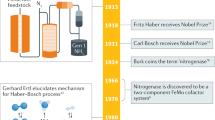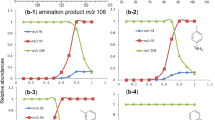Abstract
IN a number of communications in these columns I have reported the observation of high relative intensities of forbidden lines of atomic nitrogen and the forbidden bands of molecular nitrogen in nitrogen afterglows. Both the absolute and relative intensities of these radiations increased with pressure over the range which had been studied up to the spring of 1941. This included pressures from about 0.001 to 30 mm. In addition, the relative intensities increased as the time between the interruption of the afterglow producing discharge and the exposure of the afterglow was increased1. This effect has been referred to as the temporal effect.
This is a preview of subscription content, access via your institution
Access options
Subscribe to this journal
Receive 51 print issues and online access
$199.00 per year
only $3.90 per issue
Buy this article
- Purchase on SpringerLink
- Instant access to full article PDF
Prices may be subject to local taxes which are calculated during checkout
Similar content being viewed by others
References
Kaplan, J., Phys. Rev., 57, 662 (1940).
Kaplan, J., Phys. Rev., 54, 176 (1938).
Author information
Authors and Affiliations
Rights and permissions
About this article
Cite this article
KAPLAN, J. A Remarkable Green Line Source. Nature 149, 273 (1942). https://doi.org/10.1038/149273a0
Issue date:
DOI: https://doi.org/10.1038/149273a0
This article is cited by
-
Nitrogen Afterglow
Nature (1948)



